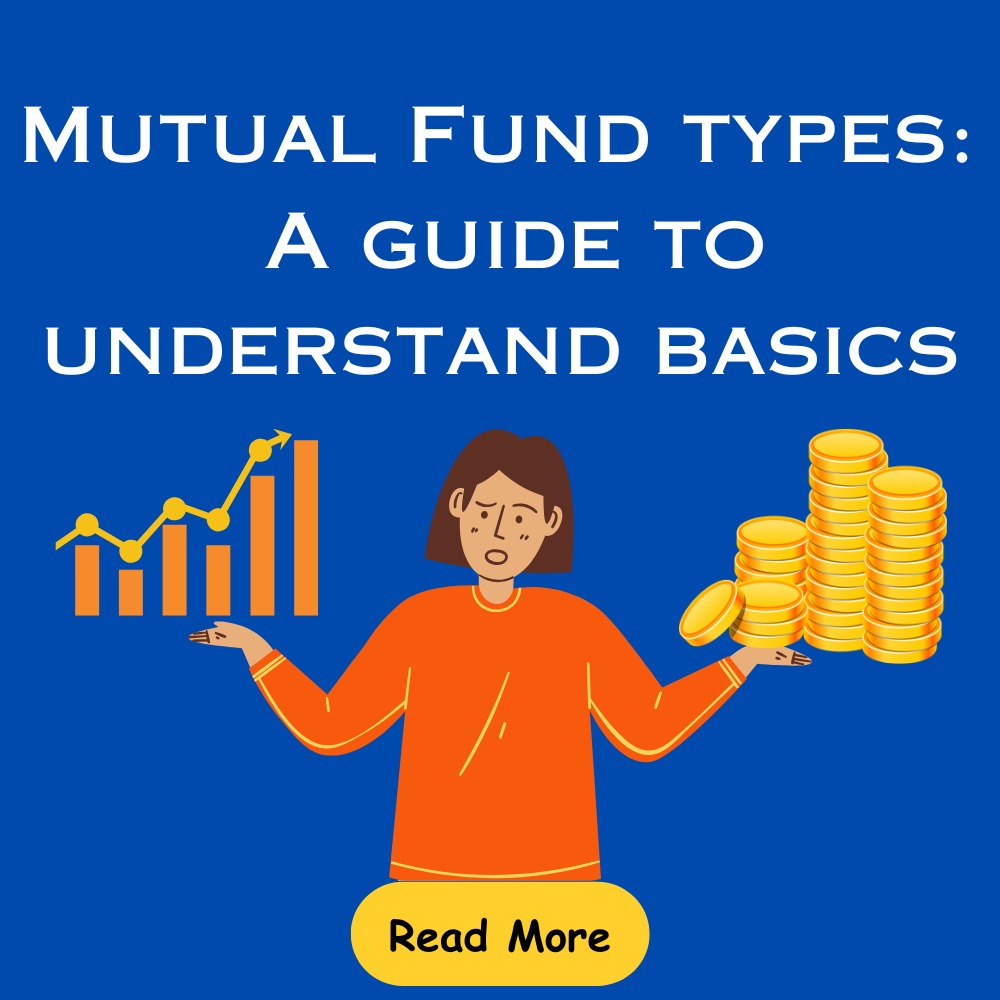Home > Blog > Blog Detail

You might have heard the term mutual fund types thrown around in finance-related conversations, but what exactly are mutual funds? Let’s understand that. Simply put, mutual funds are investment instruments that pool money from investors to invest in various financial securities, such as stocks, bonds, and money market instruments. By investing in mutual funds, you can earn higher returns than traditional savings accounts, making them a popular option among investors.
Investing in mutual funds also offers many other benefits besides higher returns. For instance, they provide diversification, meaning your money is spread across multiple securities, reducing the overall risk. Also, mutual funds are managed by professional fund managers with the expertise to make informed investment decisions.
Before investing in mutual funds, you must consider your investment goals, risk tolerance, and horizon. Doing so lets you select the right type of mutual fund that aligns with your investment objectives and offers optimal returns.

A practical approach to investing your money is in mutual funds. But with so many choices, making the best one might not be easy. This is where knowing the different mutual fund types can come in handy.
This is the first Mutual Fund type. Equity Funds are the most common type of mutual fund available in the market. They invest their money mainly in the equity market and can be classified into large, mid, or small-cap companies based on size. These funds are perfect for those who want to invest in the stock market but don’t want to do it alone.
On the other hand, Debt funds invest in fixed-income securities like government bonds and corporate bonds. They are less risky than equity funds, so the returns are typically lower.
Hybrid funds combine equity and debt funds, thus providing investors with the best of both worlds. These are best suited for those who want a balanced investment approach and are willing to take moderate risks.

Index funds are passively managed funds that follow a stock markets index like NIFTY or SENSEX. These funds are low-risk and low-return, making them a perfect choice for those looking for stable returns.
Funds of funds, as the name suggests, invest in other mutual funds. This allows investors diversification of their portfolios across different types of funds.
Different types of mutual funds suit other investment objectives. Hence, understanding the different types of mutual funds before investing is essential.
Read More: I want to stop my SIP…but what will happen to my fund?
Mutual funds have become increasingly popular due to the ease of investment and higher returns. However, one must understand the basics of mutual funds before investing in mutual funds.

This is the value of the mutual fund’s assets minus its liabilities, which is an important aspect. The mutual fund NAV is calculated based on the total value of stocks and bonds the mutual fund holds divided by the total number of its outstanding units. This indicates how much one must pay for each mutual fund unit.
The expense ratio is another essential factor to be considered in mutual funds. It is a fee charged by the mutual fund asset management company to manage the investments. The expense ratio is expressed in terms of a percentage and is deducted from the fund’s assets. A higher expense ratio can affect the returns, so looking for low-expense ratio funds is crucial.
Refer to the fee charged for buying or selling the mutual fund. Load funds typically have a sales charge or commission when buying or selling the mutual fund. On the other hand, no-load funds do not charge a sales commission, but the expense ratio can be higher.
This is a crucial factor while investing in mutual funds. Higher returns can be expected from funds with a higher risk, and vice versa. The level of risk depends on the type of mutual funds, such as equity funds, debt funds, or hybrid funds.
This means the investments are spread across different sectors and stocks, reducing the overall investment risk. Mutual funds offer a convenient way of diversifying the portfolio, reducing the risk of a single stock or bond.
Before investing in mutual funds, it’s essential to consider these basics. Careful consideration of the factors discussed, such as Net Asset Value (NAV), Expense Ratio, Load and No-load funds, risk vs return, and diversification, can help investors make informed decisions and achieve higher returns.
So, you want to invest in mutual funds? Great! But before you jump in, there are a few factors you need to consider.
Considering these factors can help you make an informed decision and ensure that you invest in the right mutual fund.
Investing in mutual funds can be an overwhelming experience, but with careful planning, you can breeze through the process. Start by identifying your investment goals- whether short-term or long-term targets.
Next, choose the right type of mutual fund that aligns with your investment objectives. Then, select a reputable fund house with a proven track record. Don’t forget to conduct extensive research and analysis to make informed decisions. Lastly, implement an investment process that fits your overall strategy. Haphazard investments might lead to unnecessary losses, and we don’t want that now, do we?
Read More: 6 Reasons Why SIP is a better option to achieve your financial goals.
So there you go, folks. Now you know the fundamentals of mutual funds: the different types, the basic terminologies you should know, and the factors to consider before investing. Investing in mutual funds could be a great way to diversify your portfolio and potentially earn higher returns. However, it’s essential to research, set realistic investment goals, and choose the right type of mutual fund that aligns with your objectives. Remember, there’s no shortcut to wealth-building, and investing in mutual funds requires patience, discipline, and a bit of luck. Happy investing!




